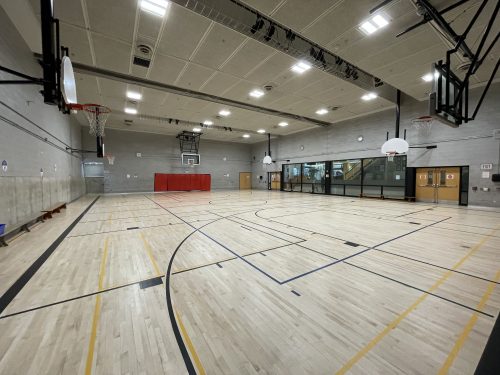
The City undertook a comprehensive energy retrofit project at the City Waterfront Building located at 627/635 Queens Quay West. The building is owned and operated by the City of Toronto and includes the following tenants:
The retrofit supports the goals of the TransformTO Net Zero Climate Action Strategy and the City’s target to reduce community-wide emissions to net zero by 2040. Buildings are the largest source of emissions in Toronto today; emissions are generated primarily from the burning of fossil fuels for heating and hot water.

The retrofit was undertaken in three stages- see details below. As a result of the retrofit, the building will:
The LED lighting retrofit, which included interior and exterior upgrades to lighting fixtures, reduced electrical consumption by approximately 204,222 kWh per year, reduced maintenance costs and improved lighting conditions in the building.

A 100KW AC solar photovoltaic (PV) system generates 134,400 kWh of renewable electricity per year, offsetting about 12 per cent of the building’s electricity usage.
The 200kWhr lithium-ion battery, connected to the solar PV system, will enhance the building’s resiliency by providing energy for the building’s critical loads during power outages. Energy stored in the battery can also be used to reduce the building’s peak electricity demand loads.

A live view of the Solar PV – Energy Storage system status is available online for review.
An innovative hydrothermal system using lake energy relies solely on electricity to provide 100 per cent of the heating and cooling for the building, eliminating the need for natural gas and significantly reducing the building’s GHG emissions.
See how the system works in this short animation:
Reengineered heating and cooling systems – The hydrothermal system significantly improves the efficiency of the systems that heat and cool the building. The new cooling system uses lake energy, eliminating the need for a cooling tower (and water use), while improving the efficiency of the system’s chiller. The new heating system uses heat pumps instead of gas-fired boilers, producing more than twice the amount of heat per energy inputted into the system.
See footage of the crane hoisting the heat exchanger into Lake Ontario:
Flexible and responsive building automation system (BAS) – Standard efficiency measures will improve occupant comfort and increase energy savings. Savings from these energy conservation measures will be generated primarily by reducing system loading and operating hours. Additionally, occupancy sensors will facilitate temperature and ventilation setbacks in vacant rooms, reducing heating/cooling requirements. A new BAS and recommissioning of the system will improve occupant comfort, be more flexible and responsive, and extend the lifetime of end devices.